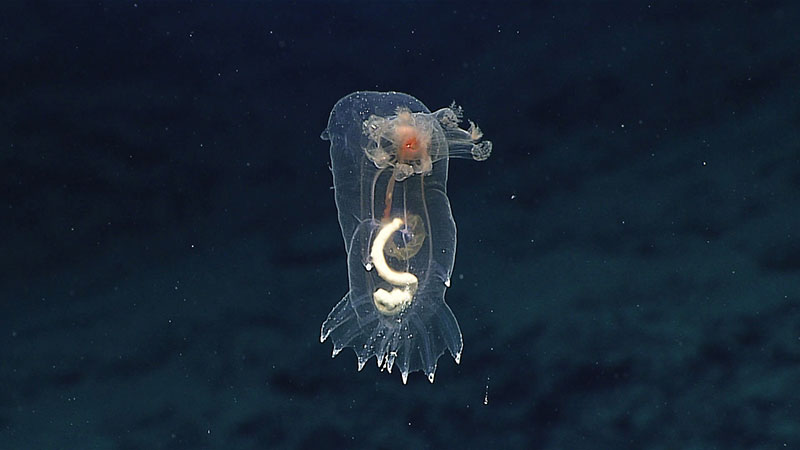-

A swimming sea cucumber seen near the cliff. Image courtesy of the NOAA Office of Ocean Exploration and Research, 2016 Hohonu Moana. Download larger version (jpg, 560 KB).
-
Community
During the fourth dive of the expedition, scientists explored a headwall scarp on the north side of Pioneer Bank, which included a steep pinnacle with a vertical relief of ~400 meters. On the flanks of the pinnacle, the density of animals increased substantially and included patches of close to 100 percent benthic cover – illustrating that the deep sea is in fact full of life. Video courtesy of the NOAA Office of Ocean Exploration and Research, 2016 Hohonu Moana. Download larger version (mp4, 78.0 MB).
-
Sea Cucumber
Holothurians, or sea cucumbers, like this one find their food on the seafloor, but are often seen swimming in the water column between feeding sessions. Given the transparency of this sea cucumber, it is easy to see that it has eaten recently. Video courtesy of the NOAA Office of Ocean Exploration and Research, 2016 Hohonu Moana.
-
Jelly
This coronate jelly was seen north of Pioneer Bank in the Papahānaumokuākea Marine National Monument on March 4, 2016. Video courtesy of the NOAA Office of Ocean Exploration and Research, 2016 Hohonu Moana.
-
Jelly
This jelly was seen pulsing through the water column during the fourth dive of the expedition, on March 4, 2016. Video courtesy of the NOAA Office of Ocean Exploration and Research, 2016 Hohonu Moana.